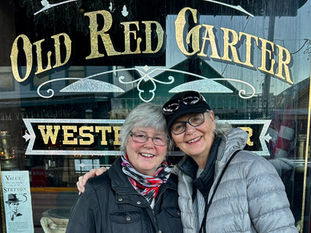
A Growing Crisis in Cancer Care: The US Is Running Out of Medical Dosimetrists
1
231
0
Even in North America—with our advanced healthcare systems—we're facing a critical shortage of certified medical dosimetrists. As a medical physicist intimately familiar with the radiotherapy workflow, I understand the crucial role these professionals play in treatment planning and quality assurance.

A 2024 article from the American Association of Medical Dosimetrists (AAMD) titled "The State of Medical Dosimetry: Strengthening the Radiation Oncology Department Now and Into the Future" presents alarming data: the annual shortfall of clinical medical dosimetrists (CMDs) is expected to rise fivefold by 2035. With professionals retiring at a higher rate than new CMDs can be trained, and increasingly stringent certification requirements, this gap will only widen.
When Resource Limitations Affect Patient Care
Resource shortages aren't theoretical—they already affect patients, including my own mother who lives in a small city with only one cancer center. She faced gut-wrenching treatment delays for her endometrial cancer. The nearest alternative treatment center was a 9 hour drive—an option she refused. Her case exemplifies how even in urban areas with established cancer centers, limited dosimetry resources can create bottlenecks in care.
The Wider Impact on Treatment Centers
Many centers across North America, including my current city, Reno, Nevada, are experiencing similar staffing constraints:
Extended treatment planning timelines due to CMD overload
Less time to optimize a plan in busy clinics
Compromised quality assurance as time pressures mount
When departments are understaffed, they're forced to prioritize the most urgent cases. When these conditions persist, delays cascade throughout the system.
The Human Cost
When my mom finally began her treatment, she confided that the waiting had been almost as difficult as the diagnosis itself. "Every day I wondered if the cancer was spreading while I waited," she told me.
According to a 2015 study in the Report on Practical Oncology and Radiotherapy, each week of delay in starting radiotherapy correlates with a 12-14% decrease in local control rates for head and neck cancers. For the approximately 500,000 rural Americans diagnosed with cancer annually, these delays could mean thousands of preventable treatment failures.
What Can Be Done?
Addressing this crisis requires immediate action:
Expand dosimetry education programs with incentives for rural practice
Develop accelerated certification pathways for allied health professionals
Implement teledosimetry services connecting rural facilities with urban centers
Increase Medicare reimbursements for radiation planning services in underserved areas
Implement automation tools like artificial intelligence to reduce the time a dosimetrist spends on each plan
This isn't just a workforce issue—it's a patient safety issue, a rural health crisis, and potentially a matter of life and death for patients like my mother.
If it's happening here in the U.S., with all our resources, imagine the ripple effects elsewhere around the world.
#RadiationOncology #CancerCare #HealthcareWorkforce #MedicalDosimetry #PatientSafety #Oncology #RuralHealth







